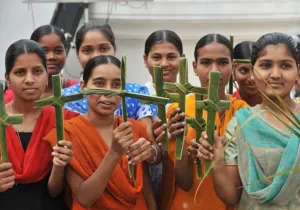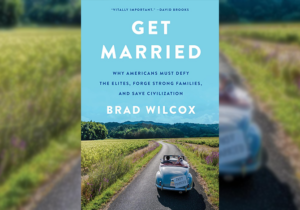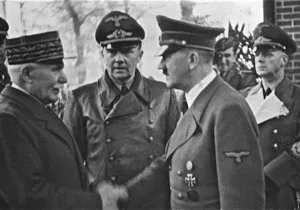On Jan. 30, 1948, during an evening prayer service in Delhi, India, Nathuram Godse fired three bullets into the stomach and chest of Mahatma Gandhi. During the subsequent murder trial, Godse attempted to explain his actions to the packed court:
My shots were fired at the person whose policy and action had brought rack and ruin and destruction to millions of Hindus… I bear no ill will towards anyone individually, but I do say that I had no respect for the present government owing to their policy, which was unfairly favourable towards the Muslims. But at the same time I could clearly see that the policy was entirely due to the presence of Gandhi.
India is known for its religious and cultural diversity; major populations of Christians, Sikhs, Buddhists, and Jains live alongside India’s two largest religious groups, Muslims and Hindus. Muslims and Hindus make up 13 percent and 80 percent of the population, respectively. However, despite their large numbers, and cultural prominence, many Hindus echo Godse’s fearful sentiments.
These collective fears have led to a rise in Hindu Nationalism. As NPR’s Lauren Frayer reports, Hindu nationalism is “the idea that the Hindu faith and culture should shape the state and its policies… The movement has its roots in the 19th century, in opposition to liberal Hindu reformers, colonialism and Christian missionaries.”
During colonial rule over India, the British policies aimed to drive a wedge between Hindus and Muslims to maintain power. During this period, three political movements emerged in response to British rule: anti-colonial secularism, Muslim separatism, and Hindu nationalism.
Gandhi was a proponent of anti-colonial secularism, seeking an inclusivist India that would promote religious freedom and toleration. The All–India Muslim League sought to protect the interests of Muslims, who feared they would be marginalized after India gained independence. The advocacy of their leader Muhammad Ali Jinnah would lead to the partition of Pakistan as a separate Muslim state. In contrast to the secularist and Muslim groups, the Hindu nationalists opposed both the partition of Pakistan as well as the secularist government of Gandhi.
The agent of change for Hindu nationalism was the Rashtriya Swayamsevak Sangh (RSS), a right-wing Hindu nationalist paramilitary volunteer organization. Drawing from the 1923 book Hindutva, meaning “Hindu–ness,” the RSS stressed the idea that the only authentic India is an exclusively Hindu India and saw Islam and Christianity as threats to the purity of India’s culture. Using the example of Nazi Germany, former RSS chief M.S. Golwalkar claimed that it is impossible to unite different races and cultures into a single nation.
Today, continued cultural and religious tensions have convinced many Hindus once again that a secular, pluralistic Indian government cannot protect their interests and wellbeing. In the 1980s, RSS affiliates played a significant role in forming the current ruling party of India, the Bharatiya Janata Party (BJP), including Narendra Modi.
The reelection of Narendra Modi to the office of prime minister of India earlier this year confirmed the continuing relevance of Hindu nationalism as an influential ideology. Leaving many of his promises from his previous campaign for economic prosperity unfulfilled, the BJP increased its emphasis on populism and nationalism for traction on the campaign trail.
In the last few years, the frequency of hate crimes against Muslims and Christians in India has increased, and interreligious tension is on the rise. For many Hindus who still trust the principles that allow for secular political pluralism, the reelection of Modi raises concerns for the future of religious freedom and pluralism in India.
Seven decades after that January night in Dehli, the choice for India remains the same. Either the fear of Godse or the hope of Gandhi will prevail. Only time will tell.





